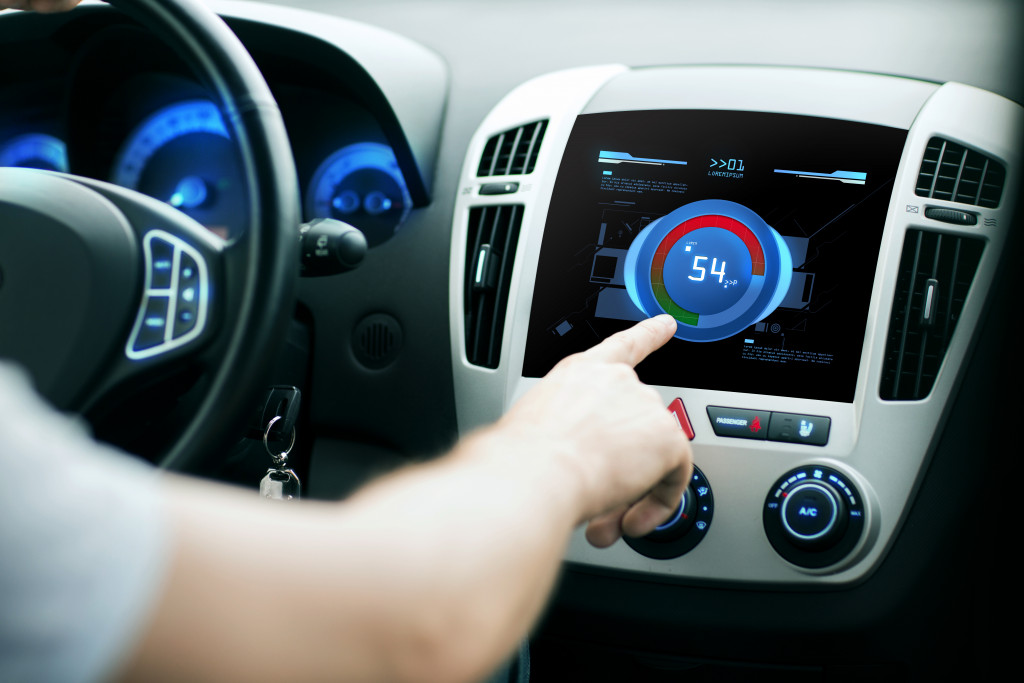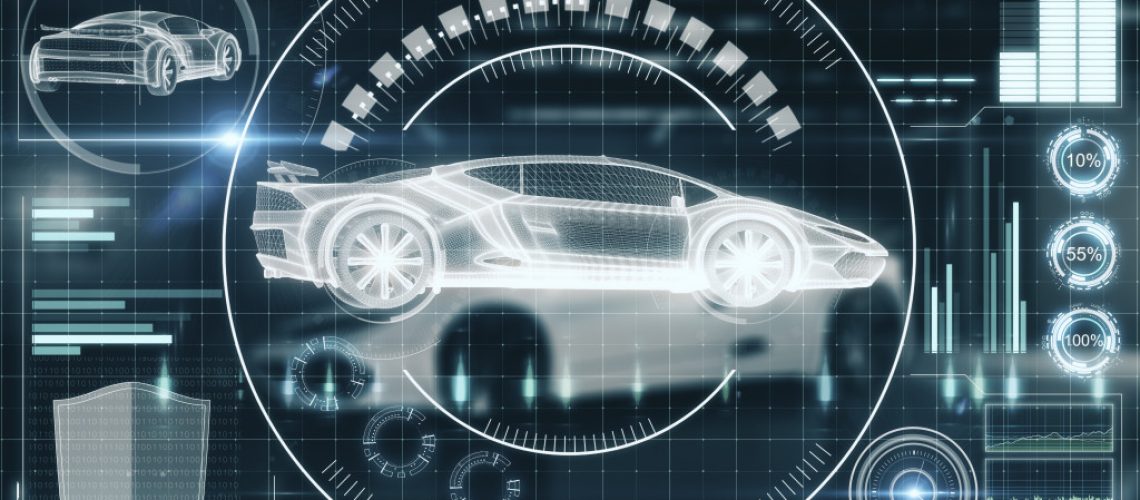Introduction
Advanced Driver Assistance Systems (ADAS) sensors are the technological marvels driving the evolution of automotive safety in the 21st century. They are the critical components of power systems, such as adaptive cruise control, lane departure warnings, and automated parking.
These sensors continuously monitor the vehicle’s surroundings, enabling real-time decision-making and action to prevent accidents and ensure a safer driving experience. Pioneering the synergy of hardware and software, ADAS sensors stand at the forefront of enhancing automotive safety and bringing the world closer to the reality of autonomous vehicles.
ADAS sensors play a pivotal role in elevating automotive safety to unprecedented levels. They act as the vehicle’s eyes and ears, monitoring the environment constantly and interpreting data to make split-second decisions that can mean the difference between safety and disaster. Whether it’s identifying a pedestrian in the car’s path, detecting a vehicle in a blind spot, or alerting the driver to a potential collision, ADAS sensors are vital.
By identifying and responding to potential hazards faster than humanly possible, these sensors reduce the likelihood of accidents, protecting the vehicle’s occupants and other road users. In a world increasingly focused on safety, ADAS sensors are an indispensable asset in your drive toward safer, smarter, and more sustainable modes of transport.
This article aims to delve deeper into the complex world of ADAS sensors. It will explore the diverse types of sensors integral to Advanced Driver Assistance Systems and elucidate their specific functions within these systems. The goal is to provide readers with a comprehensive understanding of how these cutting-edge technologies work to enhance safety and efficiency in modern vehicles. It will also guide you through the inner workings of ADAS sensors and how they contribute to the evolution of automotive safety.
The Rise of ADAS Technology
Advanced Driver Assistance Systems have been steadily gaining popularity and are rapidly becoming a standard feature in new vehicles.
Evolution of Automotive Safety

In automotive safety, the journey has been one of continuous innovation and enhancement. The earliest vehicles were devoid of any significant safety features, offering little more than basic protection in the event of a crash. Seat belts, one of the most basic safety features, were not standard until the 1960s. The subsequent decades saw the addition of other landmark safety features, such as the collapsible steering column, anti-lock braking systems (ABS), and airbags, each contributing to a new layer of safety for vehicle occupants.
The turn of the 21st century ushered in a new era in automotive safety by introducing Advanced Driver Assistance Systems (ADAS). These systems marked a paradigm shift from reactive safety measures to proactive ones, leveraging technology for accident prevention rather than simply mitigating damage post-incident. Equipped with sophisticated sensors, ADAS technology actively monitors the driving environment, identifies potential hazards, and intervenes when necessary, thereby significantly reducing the likelihood of accidents.
Today, thanks to the rapid advancement of technology, the world stands on the brink of fully autonomous vehicles, with ADAS sensors playing a pivotal role. The evolution of automotive safety, thus, has been a journey from basic physical protection to state-of-the-art technological prevention, driven by the relentless pursuit of a zero-accident future.
Decline in Injuries and Fatalities

ADAS technologies hold immense potential in reducing traffic fatalities, potentially preventing approximately 20,841 deaths per year, accounting for about 62 percent of total traffic-related fatalities. Among these life-saving features, lane-keeping assist alone contributes to 14,844 lives saved, while pedestrian automatic braking further accounts for an additional 4,106 lives.
In addition to the significant impact on fatalities, ADAS technologies can prevent or mitigate approximately 1.69 million injuries, which amounts to about 60 percent of total traffic injuries. The primary contributors to this reduction in injuries are lane-keeping assist and forward collision prevention.
ADAS technologies are projected to prevent or mitigate damage to approximately 4.60 million vehicles. It’s important to note that this estimate only accounts for crashes resulting in property damage and does not encompass potential damage reduction in more severe accidents. The primary damage reduction method is forward collision prevention, which accounts for approximately 57 percent of the overall impact.
With their advanced capabilities, ADAS technologies enhance road safety and protect lives.
ADAS is a Game-Changer
ADAS has undoubtedly revolutionized the automotive industry by shifting the paradigm from passive safety measures to active ones. Historically, safety features were designed to protect occupants during a crash – a reactive approach. However, ADAS emphasizes proactive prevention of accidents through continuous monitoring and real-time intervention, thereby enhancing safety for vehicle occupants and all road users.
Furthermore, ADAS sensors significantly enhance driver convenience with features like automated parking and adaptive cruise control. These advancements lead to a future of fully autonomous vehicles, marking a seismic shift in how people perceive and engage with driving. Indeed, ADAS technology is the lynchpin of this automotive revolution, holding the potential to transform roads into safer, more efficient spaces for all.
Types of ADAS Sensors

ADAS sensors are the unsung heroes behind the impressive capabilities of Advanced Driver Assistance Systems. They come in many forms, each tailored to perform a specific function within these systems.
Radar Sensors
Radar sensors operate on the principle of radio wave reflections. They emit radio waves that bounce back after hitting an object, allowing the sensor to determine its distance and relative speed. In the context of ADAS, radar sensors are primarily employed to effectively measure objects’ range, angle, or velocity, even under challenging weather conditions.
They play a crucial role in functionalities such as adaptive cruise control, blind spot detection, and collision avoidance systems. Radar sensors enhance vehicle safety and driving convenience by providing accurate and reliable data about the surrounding environment.
LiDAR Sensors
LiDAR Sensors, or Light Detection and Ranging sensors, use the principles of reflection to gather information about the environment. These sensors emit laser light pulses and measure the time it takes for each pulse to bounce back after hitting an object. This information is then used to calculate the distance and generate a detailed 3D map of the surroundings. Due to their high precision, LiDAR sensors are integral to autonomous driving. They provide comprehensive, real-time data about the vehicle’s environment, enabling it to navigate complex driving scenarios effectively. From identifying obstacles and people in the vehicle’s path to mapping the vehicle’s surroundings for enabling detailed route planning and decision-making, the role of LiDAR sensors is paramount in the progression toward fully autonomous vehicles.
Camera Sensors
Camera sensors in ADAS are the digital eyes of the vehicle, providing critical visual data that facilitates various safety functions. Through sophisticated image processing algorithms, these sensors interpret visual cues in the environment, such as the presence of pedestrians, other vehicles, traffic signals, and road markings. This visual perception capability supports safety features like lane departure warnings, traffic sign recognition, and pedestrian detection.
Moreover, camera sensors enhance driver convenience through features like parking assist, providing live visual feeds to help drivers navigate tight parking spaces. By delivering a comprehensive visual understanding of the vehicle’s surroundings, camera sensors significantly enhance the safety and convenience of modern driving experiences.
Ultrasonic Sensors
Ultrasonic sensors work on the principle of sound wave reflections. They emit sound waves at a frequency higher than what humans can hear. These waves hit nearby objects and bounce back to the sensor, which calculates the time the echo takes to return. This information determines the distance between the sensor and the object. Ultrasonic sensors are particularly effective in detection and ranging within short distances, making them ideal for parking assistance and local obstacle detection.
During parking maneuvers, these sensors can accurately detect the presence of objects around the vehicle, such as other cars, walls, or barriers. This helps prevent collisions by providing real-time feedback to the driver or controlling the car directly in cases of automated parking systems. They are also utilized for blind spot detection, offering an extra layer of safety during lane changes or similar maneuvers. By delivering precise short-range detection, ultrasonic sensors significantly enhance the safety and convenience of parking and low-speed driving.
Sensor Fusion: Making Sense of Data
Sensor fusion combines data from multiple sensors to create a more comprehensive and accurate understanding of the vehicle’s environment. The aim is to harness the strengths of each sensor, overcome their limitations, and provide an overarching view of the surroundings.
The Concept of Sensor Fusion
Sensor fusion, a critical component of ADAS, is a process that integrates data from multiple sensors to create a comprehensive and accurate understanding of the surrounding environment. It’s akin to putting together pieces of a puzzle; each sensor provides a piece of the overall picture, and sensor fusion combines these fragments into a coherent, detailed image. This process is vital as it allows for a more holistic view, overcoming individual sensor limitations and capitalizing on their strengths.
For instance, while a radar sensor excels in detecting objects’ distance and speed, a camera sensor provides detailed visual data. By combining their outputs, the system can make more informed decisions, enhancing the accuracy of the ADAS functions. Therefore, sensor fusion is instrumental in driving the efficacy of ADAS systems, contributing significantly to road safety and the development of autonomous vehicles.
How Multiple Sensors Work Together
Different ADAS sensors combine to create a comprehensive data map of the vehicle’s surroundings, each contributing unique capabilities. Radar sensors are excellent at gauging the distance and speed of surrounding objects, providing critical data for functionalities like collision avoidance and adaptive cruise control. Meanwhile, Camera sensors interpret visual cues, aiding in recognizing traffic signs, pedestrians, and road markings while assisting with parking maneuvers.
LiDAR sensors contribute to the data pool by generating high-resolution, 3D maps of the environment, which are essential for complex navigation tasks, especially in autonomous vehicles. Finally, ultrasonic sensors offer precise short-range detection capabilities, useful in parking assistance and obstacle detection during low-speed driving.
Through sensor fusion, these diverse data sets are combined to create a holistic and highly accurate view of the environment. This comprehensive data integration enables ADAS to function more effectively, making informed decisions based on a complete understanding of the vehicle’s surroundings. As a result, safety measures are enforced with greater precision, significantly enhancing driving safety and efficiency.
ADAS Applications and Features
As ADAS technology continues to evolve, it finds applications in various areas of vehicle safety and convenience.
Adaptive Cruise Control (ACC)
Adaptive Cruise Control (ACC) is an advanced safety feature that automatically adjusts the vehicle’s speed to maintain a safe distance from the vehicle ahead. Radar sensors play an integral role in the functioning of ACC by continuously monitoring the distance and relative speed of the vehicle in front. Upon detecting a slow-moving or stationary vehicle ahead, the radar sensor sends a signal to the ACC system, automatically slowing down or stopping the car to maintain the preset distance.
LiDAR sensors, on the other hand, support ACC functionality by creating detailed 3D maps of the environment. They emit pulses of laser light and measure the time it takes for each pulse to bounce back after hitting an object. This information is used to compute accurate distances and generate a comprehensive topological map of the surroundings. LiDAR sensors offer an additional layer of precision to ACC, enabling the system to predict the paths of other road users and react swiftly to quickly changing traffic scenarios. Together, radar and LiDAR sensors form the backbone of ACC, ensuring safer, more comfortable, and hassle-free driving experiences.
Lane Keeping Assist (LKA)
Camera sensors are pivotal in Lane Keeping Assist (LKA) systems. They continuously capture images of the road ahead and use sophisticated image processing algorithms to identify visible lane markings. The system then determines the vehicle’s position within these lane markings. If the car begins to drift out of its lane without a turn signal being activated, the LKA system alerts the driver through visual, auditory, or haptic signals. In more advanced systems, the LKA may even take corrective action by applying slight steering torque to guide the vehicle back into its lane. By providing a crucial visual understanding of the road, camera sensors make LKA systems effective in preventing lane departure accidents and increasing overall road safety.
Automatic Emergency Braking (AEB)
Automatic Emergency Braking (AEB) is a crucial safety feature that can reduce accidents’ severity and save lives significantly. This system is typically supported by radar, camera, and LiDAR sensors. Radar sensors are crucial to detecting the distance and relative speed of objects in front of the vehicle. If a potential collision is detected, the system alerts the driver. If the driver does not respond in time, the AEB system can activate the brakes automatically to prevent or mitigate the collision.
Camera sensors add to this by providing visual data, allowing the system to identify pedestrians, cyclists, and other vehicles. Their sophisticated image-processing algorithms can interpret the data and distinguish between different objects, enhancing the system’s accuracy.
LiDAR sensors further bolster the effectiveness of AEB systems, especially in complex driving scenarios. Creating high-resolution, 3D environmental maps helps the system better understand the vehicle’s surroundings and respond accordingly.
Therefore, the synergy between these sensors in AEB systems contributes significantly to road safety. By preventing accidents or reducing their severity, these systems demonstrate their life-saving potential and underscore the importance of sensor technology in ADAS.
Challenges and Limitations
While ADAS technology has significantly advanced in recent years, some challenges and limitations remain.
Sensor Reliability
Weather conditions pose a serious challenge to the reliability of ADAS sensors. For instance, heavy rain, snow, or fog can significantly impair the ability of camera sensors to capture clear images, making it challenging to identify road markings, traffic signs, and other crucial visual information. LiDAR sensors, although highly accurate, can also be affected by adverse weather, as rain or snow particles can scatter the laser light pulses, reducing the accuracy of the generated 3D maps.
Similarly, radar sensors, while generally robust against weather variations, can face decreased performance in extreme conditions. These weather-related limitations can lead to inaccuracies in the data collected by the sensors, affecting the performance of ADAS systems and potentially compromising vehicle safety. Therefore, enhancing the weather resilience of ADAS sensors is a key area of focus in ongoing research and development efforts.
Cybersecurity Concerns
With the increasing sophistication of ADAS, cybersecurity has become a noted concern. As vehicles become more connected and autonomous, they are exposed to potential cyber threats that can exploit vulnerabilities in the sensor systems. Hackers may manipulate the sensor data, causing the vehicle to perceive threats or obstacles that do not exist or ignore actual threats.
For instance, attackers could deceive radar, LiDAR, or camera sensors to disrupt the ADAS functions, resulting in potentially dangerous situations. Furthermore, the data these sensors collect, including details about the vehicle’s routes and the habits of its users, could be a target for cybercriminals. Consequently, safeguarding ADAS sensors from cyber threats is an emerging challenge, and maintaining robust cybersecurity measures is vital to ensure the safety and privacy of users.
The Road to Autonomous Driving
ADAS technology has made significant contributions to enhancing vehicle safety and driver convenience. As sensor technology continues to evolve, ADAS systems are moving towards more advanced levels of automation, ultimately leading to fully autonomous driving in the future.
Autonomous Driving Levels
The levels of autonomous driving, as defined by the Society of Automotive Engineers (SAE), range from Level 0 (No Automation) to Level 5 (Full Automation).
- Level 0 (No Automation): The driver performs all driving tasks. ADAS sensors may provide warnings and momentary assistance, but overall control is in the hands of the driver.
- Level 1 (Driver Assistance): The vehicle can assist either with steering or speed control, but not simultaneously. ADAS sensors like cameras and radar assist with functionalities like Adaptive Cruise Control (ACC) or Lane Keeping Assist (LKA).
- Level 2 (Partial Automation): The vehicle can control steering and speed under certain conditions. The driver must stay alert and ready to take control. Multiple ADAS sensors, including radar, cameras, and sometimes LiDAR, are utilized for functions like ACC and LKA.
- Level 3 (Conditional Automation): The vehicle can handle all driving tasks under certain conditions, but the driver must be ready to take over when alerted. To achieve this, an array of ADAS sensors, including radar, cameras, LiDAR, and ultrasonic sensors, are used for environmental perception and decision-making.
- Level 4 (High Automation): The vehicle can handle all driving tasks in certain environments and conditions and can cope without human intervention in the event of a system failure. A dense network of ADAS sensors is required for this level, and Sensor Fusion is critical to handle the complexity of the vehicle’s surroundings.
- Level 5 (Full Automation): The vehicle can handle all driving tasks under all conditions, with no human driver needed. The car relies on a robust ADAS sensor suite, including radar, camera, LiDAR, and ultrasonic sensors, to make driving decisions.
Each level of autonomous driving relies more on sensor data and the vehicle’s ability to interpret it. As the world progresses towards higher levels, the sensor requirements increase, necessitating a more complex and capable array of sensors.
Self-Driving Car Initiatives
Several major automotive companies are at the forefront of developing self-driving car technology, leveraging ADAS sensors to transform the future of mobility.
Tesla is one of the most notable names in this space, with its Autopilot and Full Self-Driving system utilizing a combination of radar, ultrasonic, and camera sensors to enable advanced autonomous features. Tesla’s approach focuses on achieving full autonomy without LiDAR sensors, relying on advanced machine learning algorithms to interpret visual data.
Waymo, a subsidiary of Alphabet Inc., Google’s parent company, has been conducting self-driving tests for over a decade. They employ an array of LiDAR, radar, and camera sensors for their autonomous system, focusing on high-definition mapping and sophisticated object recognition.
General Motors, through its subsidiary, Cruise, is developing an autonomous vehicle with the ultimate goal of a driverless taxi service. GM leverages its proprietary electric vehicle architecture and an array of sensors, including camera, radar, and LiDAR, to comprehensively perceive the vehicle’s environment.
Similarly, Ford is exploring self-driving technology through its subsidiary Argo AI. They utilize a combination of LiDAR, radar, and camera sensors, focusing on creating detailed 3D maps of the environment and advanced obstacle detection.
These companies’ efforts underline the importance of ADAS sensors in advancing self-driving car technology and highlight the rapid advancements towards the future of autonomous vehicles. Despite the challenges, their continued focus on research and development in ADAS sensor technology promises a future of safer, more efficient, and more accessible mobility solutions.
The Future of ADAS Sensors
As the world moves toward the future, ADAS sensors will continue to play a vital role in enhancing vehicle safety and convenience. With ongoing research and development efforts, people can expect more robust, accurate, and reliable sensor technology that overcomes existing challenges.
Innovations in Sensor Technology
Innovations in ADAS sensor technology are advancing at an unprecedented pace, propelling the world closer to the reality of fully autonomous driving. One such innovative field is the development of solid-state LiDAR sensors. Unlike traditional LiDAR units that are mechanical and bulky, solid-state LiDARs are smaller, more robust, and cost-effective. They can seamlessly integrate into vehicle design and offer improved performance, especially in adverse weather conditions.
Another notable innovation is the advent of high-resolution radar sensors, which can detect and classify objects with a higher level of precision. They can even detect non-metallic objects, a quantum leap from traditional radar technology.
Infrared sensors are also gaining traction. They can provide better visibility in poor lighting conditions and detect thermal signatures of living beings, augmenting the safety of pedestrians and wildlife.
The innovation of sensor fusion, where data from different sensor types (radar, LiDAR, camera) are combined and processed, is also a significant development. This approach increases the accuracy of data interpretation and enables a more holistic understanding of the vehicle’s surroundings.
Lastly, advancements in artificial intelligence and machine learning algorithms are revolutionizing how these sensors process and interpret data, improving ADAS systems’ overall performance and decision-making capabilities. These ongoing innovations in ADAS sensor technology and many others hold great promise for the future of autonomous driving.
Regulatory Changes
Government regulations play an essential role in shaping the future of ADAS. As vehicle safety is a significant concern, regulatory bodies worldwide are progressively introducing mandates for including certain ADAS features in new vehicles. For example, the European Union has made it mandatory for all new cars to deploy several ADAS features, such as Lane Departure Warning (LDW), Advanced Emergency Braking Systems (AEBS), and Driver Drowsiness and Attention Warning from 2022 onwards.
Similarly, the National Highway Traffic Safety Administration (NHTSA) in the U.S. has voluntarily agreed with automakers to make Automatic Emergency Braking (AEB) a standard feature in all new cars by 2022. Such regulations not only spur industry-wide adoption of ADAS but also contribute to enhancing road safety. However, they also pose challenges, as automakers need to ensure their ADAS systems comply with varying standards across regions. Future regulatory developments will continue to influence the design, capabilities, and adoption of ADAS systems, underlining the importance of close collaboration between automakers, regulatory bodies, and other stakeholders in the automotive ecosystem.
Conclusion
ADAS sensors have emerged as one of the most critical components in modern automotive safety, significantly enhancing the safety and convenience of driving. These sensors, including radar, LiDAR, camera, and ultrasonic sensors, contribute to a comprehensive perception of the vehicle’s surroundings, enabling various driver assistance functions that prevent accidents and protect lives.
By alerting drivers to potential hazards, assisting in vehicle control, and sometimes even autonomously performing safety functions, ADAS sensors have demonstrated the potential to reduce traffic accidents and road fatalities drastically. Despite current limitations and challenges, ongoing advancements in sensor technology, coupled with an increasing emphasis on vehicle safety regulations, are set to further elevate the role of ADAS sensors in the future of automotive safety.

